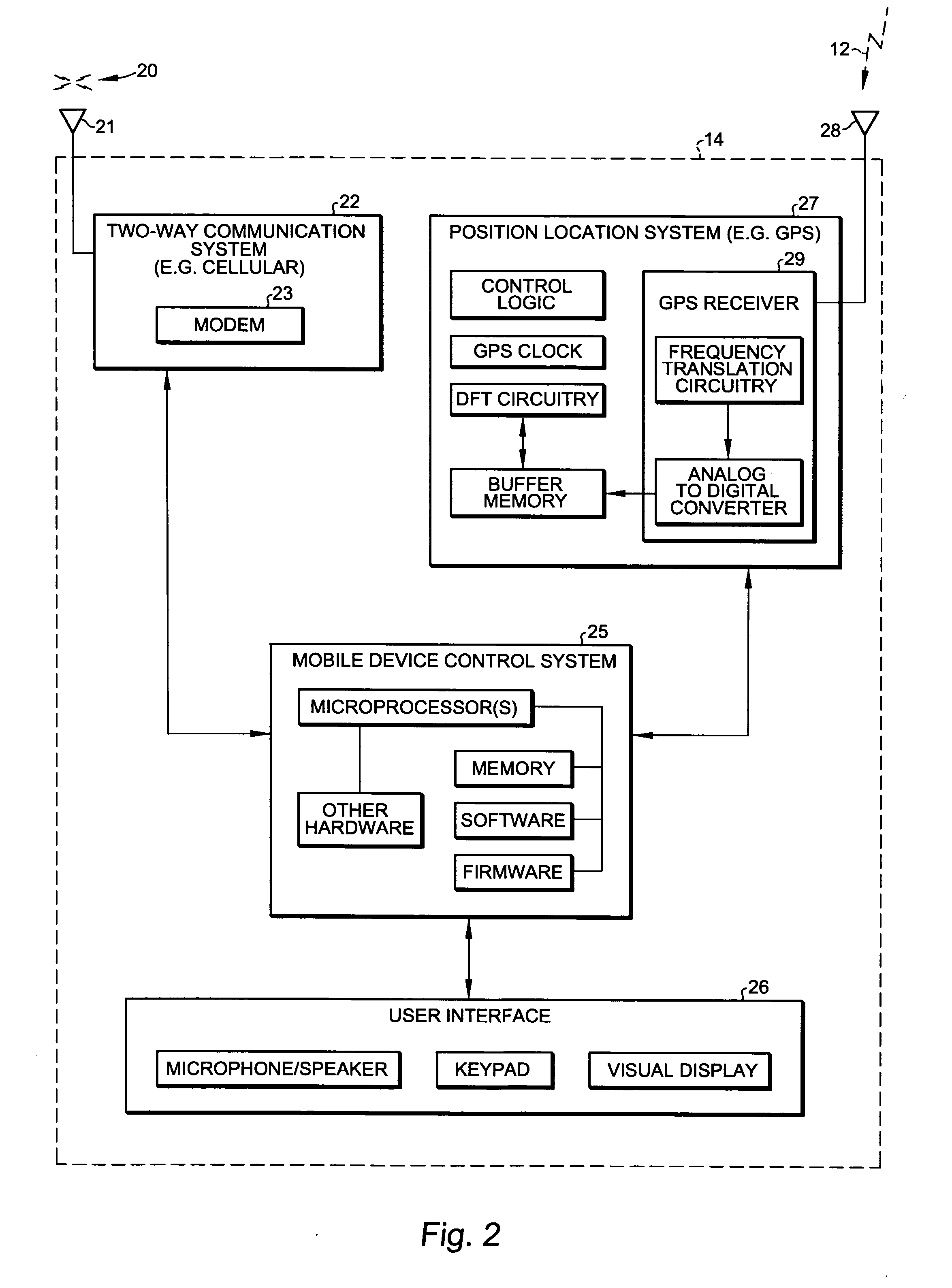Rapid acquisition methods and apparatus for GPS signals
a technology of gps signals and acquisition methods, applied in the field of gps signals acquisition methods and apparatuses, can solve the problems of difficult acquisition of signals from gps satellites, reduced low power, and extremely weak signals at the receiver, so as to reduce the total number of calculations, improve processing speed, and improve sensitivity
- Summary
- Abstract
- Description
- Claims
- Application Information
AI Technical Summary
Benefits of technology
Problems solved by technology
Method used
Image
Examples
Embodiment Construction
Glossary of Terms and Acronyms
[0044] The following terms and acronyms are used throughout the detailed description:
[0045] A-GPS: Assisted GPS. A location technology in which special assistance to the GPS acquisition process is provided by a location server, which can reduce acquisition time and improve sensitivity.
[0046] Base Station or BTS: Base Transceiver Station. A fixed station used for communicating with mobile stations. Includes antennas for transmitting and receiving wireless communication signals.
[0047] CDMA: Code Division Multiple Access. A high-capacity digital wireless technology that was pioneered and commercially developed by QUALCOMM™ Incorporated.
[0048] Chip: A symbol, also the smallest part of a modulation (e.g., a phase reversal) of a pseudorandom (PN) sequence.
[0049] Chip rate: Symbol transmission rate.
[0050] Code phase: The relative timing between a frame boundary of a received signal modulated by a PN sequence contained within a received GPS signal and t...
PUM
 Login to View More
Login to View More Abstract
Description
Claims
Application Information
 Login to View More
Login to View More - R&D
- Intellectual Property
- Life Sciences
- Materials
- Tech Scout
- Unparalleled Data Quality
- Higher Quality Content
- 60% Fewer Hallucinations
Browse by: Latest US Patents, China's latest patents, Technical Efficacy Thesaurus, Application Domain, Technology Topic, Popular Technical Reports.
© 2025 PatSnap. All rights reserved.Legal|Privacy policy|Modern Slavery Act Transparency Statement|Sitemap|About US| Contact US: help@patsnap.com



